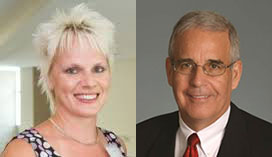ABSTRACT This article reports on a nine-year longitudinal analysis studying how social and other emerging media technologies are bringing dramatic changes to how public relations is practiced. The major finding in the 2014 study involves Twitter narrowly replacing Facebook for the first time as the most frequently accessed new medium for public relations activities. LinkedIn … Continue reading An Updated Examination of Social and Emerging Media Use in Public Relations Practice: A Longitudinal Analysis Between 2006 and 2014
- Home
- An Updated Examination of Social and Emerging Media Use in Public Relations Practice: A Longitudinal Analysis Between 2006 and 2014
All posts by Donald K. Wright

This article outlines the major aims and goals of the Research Journal of the Institute for Public Relations, a new, open-access, double-blind, peer reviewed rapid publication. It explains how the RJ-IPR can help the Institute continue to build a bridge between the academy and the practice while exploring what IPR likes to call the science beneath the art of public relations.™ The article also reviews the prestige, strengths and limitations of online, scholarly journals, the role they can plan and the impact they can have in a variety of academic discipline.

For the past eight years, we have conducted an annual survey measuring how social and other new media technologies are being used in public relations practice. Results of our research have been published in various journals and each year we’ve given reports about our findings to audiences at academic and practitioner conferences. Although others have … Continue reading Examining How Social and Other Emerging Media Are Being Used in Public Relations →

Abstract This article suggests a generic model that includes a degree of standardization against which to compare planning and programming is the best way to establish excellence in public relations and corporate communication. The authors suggest this model can be (a) historically, to establish past campaigns; (b) used in the strategic planning process to identify … Continue reading Evaluating Efficacy in Public Relations/Corporate Communication Programming: Towards Establishing Standards of Campaign Performance →

Wright, Donald K. & Hinson, Michelle, Drifka. (2011, Summer). A three-year longitudinal analysis of social and emerging media use in public relations practice. Public Relations Journal, 5(2), 1-32. Although others have examined the impact new communications media are having on public relations, the annual Wright & Hinson surveys represent one of the few attempts to … Continue reading A Three-Year Longitudinal Analysis of Social and Emerging Media Use in Public Relations Practice →

Using their previous research as a foundation for their newest study, Wright and Hinson examine the continuing impact social media are having on public relations practice. They find these new technologies are dramatically changing public relations and the way it is practiced. Results of this year’s research show considerably more agreement in some areas than was … Continue reading An Analysis of the Increasing Impact of Social and Other New Media on Public Relations Practice →
This paper explores several ethical issues about weblogs and employee communications through a web-based, international study of public relations practitioners. The following research questions form the basis of this research. Download PDF: Weblogs and Employee Communication: Ethical Questions for Corporate Public Relations
Is this the death of the grapevine? This paper examines changes in employee communication due to interactive technologies that allow employees to take control of both media and message selection. The author has conducted a decade-long trend study based on interviews with plant employees of a large, international manufacturing company. Internal email and the company’s internet … Continue reading An Analysis of the Increasing Importance of the Role of the Receiver in the Communication Process →
This study examined corporate communications policy concerning the Internet and interactive media through a mail questionnaire survey of 236 of the nation’s most senior-level public relations and corporate communications officers. Download PDF: Corporate Communications Policy Concerning The Internet
